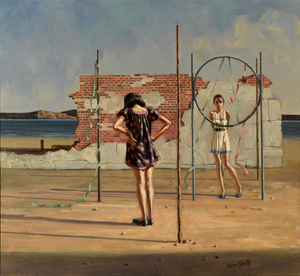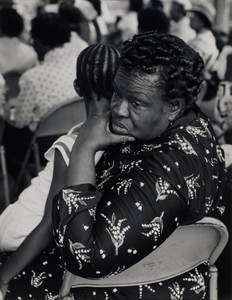Description
Hughie Lee-Smith's art conveys the alienation and isolation experienced by many African Americans during the middle decades of the twentieth century, yet his work speaks in larger terms about our inability to reach out and connect with others on grounds larger than race. Although Lee-Smith was a direct contemporary of Jacob Lawrence, his art followed a different trajectory, adopting an approach to realism inflected by the sense of isolation and alienation in Edward Hopper's work, and by the surrealistic tendencies of Giorgio di Chirico. That surrealistic edge to his work intensifies the emotional distance conveyed by the people in his paintings.Over a sixty-year career, Lee-Smith explored psychological corners of the human experience grounded in separation and displacement. As the artist remarked about his work, "I think my paintings have to do with an invisible life—a reality on a different level." In The Beach, a young woman holds a small child as a strong wind buffets her body and sweeps across the sand. She seems lost in the close contact with her child, while the limitless sky and sea speak to the larger universe around her, of which she seems unaware.Smithsonian American Art Museum, 2009
Image
Oil On Canvas
Smithsonian American Art Museum, Bequest of Henry Ward Ranger through the National Academy of Design





















